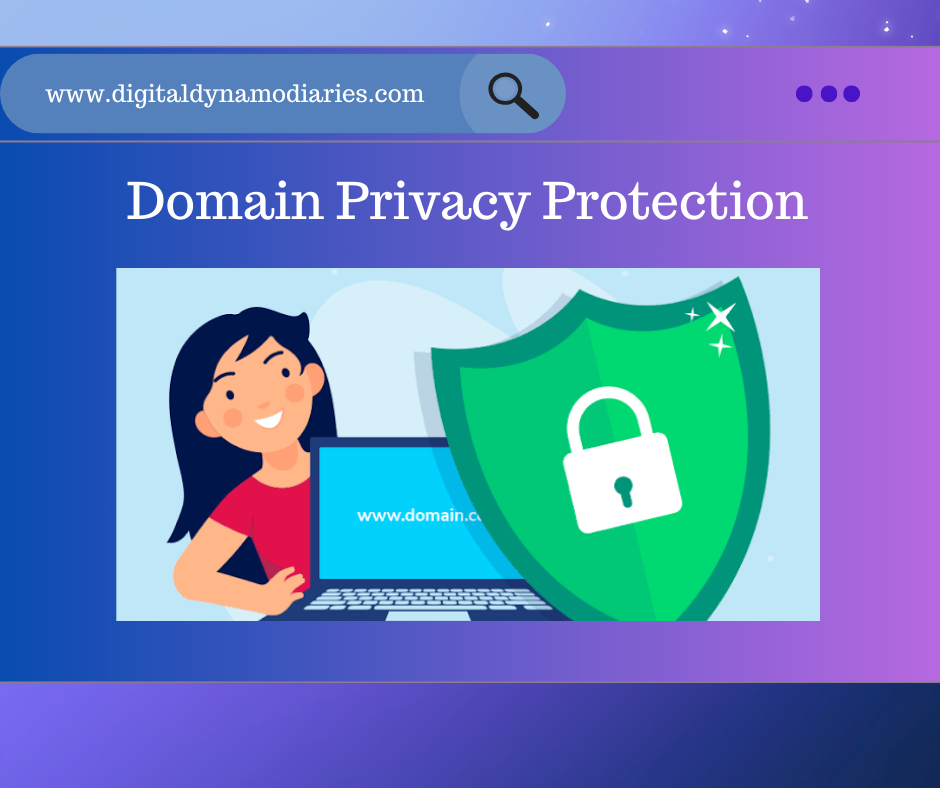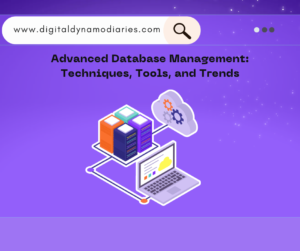Domain Privacy Protection
In today’s digital age, protecting your online identity is more important than ever. One crucial aspect of this protection is domain privacy protection, a service offered by many domain registrars to safeguard your personal information. In this comprehensive guide, we’ll delve into what domain privacy protection is, why it’s essential, how it works, and what you need to consider when choosing this service.
What is Domain Privacy Protection?
When you register a domain, your personal information, including your name, address, phone number, and email is added to the WHOIS database. This publicly accessible database allows anyone to look up the owner of a domain name. This is a service that replaces your personal information with the contact information of a proxy service, effectively keeping your details private.
Key Components of the WHOIS Database:
To understand the importance of domain privacy protection, it’s essential to know what information is publicly accessible. The WHOIS database contains several key components that reveal personal details about domain owners.
– Registrant Name: The name of the person or organization that registered the domain.
– Registrant Contact Information: This includes the physical address, phone number, and email address of the registrant.
– Domain Registration Dates: Information on when the domain was registered and when it is set to expire.
– Domain Name Servers: The DNS servers associated with the domain, which are critical for the domain’s operation.
Why is Domain Privacy Protection Important?
Your domain name is a valuable asset, and protecting the associated personal information is crucial. Here are several reasons why domain privacy protection is essential for anyone managing a domain.
1. Prevents Identity Theft and Fraud
One of the primary reasons to use domain privacy protection is to prevent identity theft and fraud. Cybercriminals often use the WHOIS database to gather information for phishing attacks, social engineering schemes, and other malicious activities. By keeping your personal information hidden, it reduces the risk of these threats.
2. Reduces Spam
Spam is a persistent problem for many domain owners. Publicly available email addresses in the WHOIS database can attract spammers. These email addresses can be harvested by bots and used for unsolicited marketing emails, phishing attempts, and other forms of spam. With domain privacy protection, your email address is concealed, significantly reducing the volume of spam you receive.
3. Protects Your Privacy
Maintaining your privacy online is increasingly important in an age where personal data is a hot commodity. Whether you’re an individual or a business, keeping your personal information private can prevent unwanted contact and harassment. This is particularly important if you’re managing multiple domains or high-profile websites. Privacy protection ensures that only relevant and legitimate inquiries reach you.
4. Maintains Professionalism
For businesses, the public perception of professionalism is vital. For businesses, domain privacy protection ensures that only relevant business information is accessible, maintaining a professional image and protecting employee privacy. It helps to avoid unnecessary distractions and potential security risks that can arise from having personal contact information publicly available.
5. Complies with Privacy Regulations
Adhering to privacy regulations is not only a legal requirement but also a best practice. Privacy regulations such as the General Data Protection Regulation (GDPR) in the European Union require organizations to protect personal data. Using domain privacy protection can help you comply with these regulations by ensuring that your personal information is not exposed unnecessarily.
How Does Domain Privacy Protection Work?
Understanding how domain privacy protection works can help you appreciate its importance and effectiveness. When you opt for it, your registrar will substitute your personal WHOIS information with their own or that of a proxy service. Here’s a step-by-step breakdown of how it works:
Step-by-Step Process:
The process of activating domain privacy protection is straightforward but involves several key steps. Here’s a step-by-step breakdown of how it works:
1. Registration: You register your domain as usual, providing your personal details during the process.
2. Activation: You opt for domain privacy protection, either during the initial registration process or by adding it later through your registrar’s settings.
3. Information Substitution: The registrar replaces your personal WHOIS information with their proxy details. This usually includes a generic name, address, and email address provided by the proxy service.
4. Forwarding Service: If someone needs to contact the domain owner, the registrar or proxy service forwards legitimate inquiries to you without revealing your personal information. This ensures you can still receive important communications related to your domain.
Tips For Choosing Domain Privacy Protection
Not all domain privacy protection services are created equal. Before you choose a domain privacy protection service, there are several important factors to consider to ensure you get the best protection for your needs.
1. Cost
Cost is always a factor when choosing additional services for your domain. The cost of domain privacy protection can vary widely among registrars. Some offer it for free with domain registration, while others charge an annual fee. It’s important to compare the costs and benefits across different registrars to find the best value for your needs.
2. Reputation of the Registrar
The reputation of your domain registrar plays a significant role in the quality of service you receive. Ensure the registrar is reputable and trustworthy. The quality of privacy protection can vary, and you want to ensure your information is genuinely secure. Look for registrars with good reviews, strong security practices, and a proven track record in protecting their customers’ privacy.
3. Control Over Information
Flexibility in managing your privacy settings can be very beneficial. Some privacy protection services may allow you to customize which details are kept private and which are public. This flexibility can be beneficial depending on your needs. For instance, you might want to keep your email address private but make your business name and address public.
4. Compliance with Laws
Legal compliance is a critical consideration when managing personal data. Make sure the service complies with relevant privacy laws and regulations. For example, if you’re based in the European Union or have customers there, the service should be GDPR compliant. Non-compliance can lead to hefty fines and other legal consequences.
5. Ease of Use
The user interface of your registrar can make a big difference in managing your domains. Consider how easy it is to activate and manage domain privacy protection with the registrar’s user interface. A good service should be user-friendly, allowing you to enable or disable privacy protection quickly and easily. The process of managing your domains and updating your information should be straightforward.
6. Additional Features
Some registrars offer additional features as part of their domain privacy protection service. These features can add significant value to the service. These can include enhanced security measures, such as two-factor authentication (2FA) for accessing your domain management account, or additional layers of protection against domain hijacking.
Conclusion
Domain privacy protection is a vital tool for anyone registering a domain, offering significant benefits in terms of security, privacy, and professionalism. By understanding what it is, how it works, and what to look for when choosing a service, you can make an informed decision to protect your online identity effectively.
Investing in it is a small but crucial step toward securing your personal information and maintaining control over your online presence. Whether you’re an individual looking to safeguard your personal data or a business aiming to protect your employees and maintain a professional image, this is an essential consideration.
When choosing a domain registrar, prioritize those that offer robust and comprehensive privacy protection services. Ensure they have a solid reputation, comply with relevant laws, and provide a user-friendly experience. By doing so, you can enjoy the peace of mind that comes with knowing your personal details are safe from prying eyes.
By prioritizing it, you’re not only safeguarding your identity but also enhancing the security and credibility of your online activities. Protect your privacy, reduce the risk of cyber threats, and maintain your professional image by opting for domain privacy protection today.



